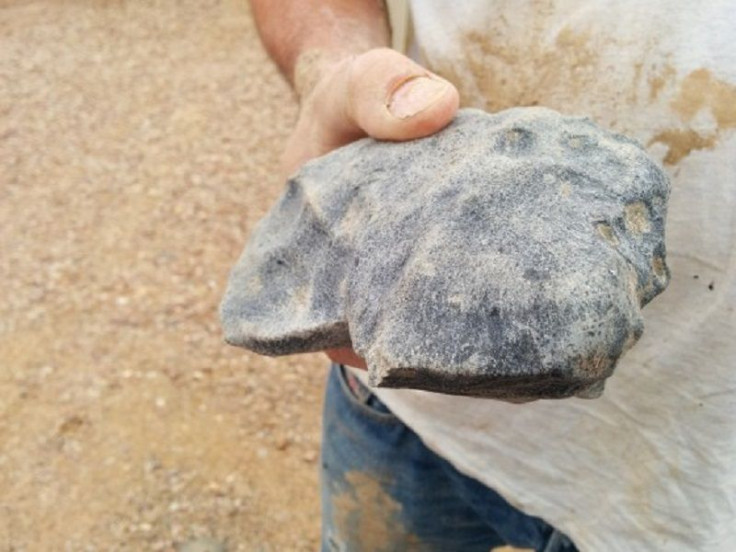Scientists uncover older-than-Earth meteorite; world-class technologies part of Australia’s innovation and science agenda

The Desert Fireball Network Team celebrated the New Year’s with a bang as it unravelled its findings of an “older than Earth” chondrite meteorite in outback South Australia. In a press statement , scientists from Curtin University, in collaboration with Western and South Australian Museums, recounted how they were able to recover a 1.7-kilogramme meteorite before it was almost washed away in Kati Thanda-Lake Eyre.
A meteorite fall was witnessed by locals in the William Creek on Nov 27, 2015. The Desert Fireball Network cameras stationed in strategic locations also captured the phenomenon. With the help of their 32 remote camera observatories and a plethora of complicated geographical calculations, the team recreated the image and location of the impact.
Complex logistics measures, consisting of aerial spotters, remotely operated drones and two other local guide searchers, were needed to recover the meteorite, located six kilometres in the farthest part of the lake.
Team leader and planetary geologist Professor Phil Bland hand-dug Bland was documented digging the rock, deeply covered in salt lake mud. The team was lucky to get there before potential heavy rains completely washed off traces of the meteorite.
Bland stated that the rock, thought to be a chondrite or stony meteorite, was composed of materials that were already present about 4.5 billion years ago. Mechatronic Engineer Dr Jonathan Paxman said that the team worked round the clock to deduce the data striving to rapidly recover something that can be lost forever.
“The fact we have managed to retrieve the meteorite at all is remarkable,” Paxman added.
Another significant feat in this discovery is the successful creation and use of highly advanced machines in remote areas. The Australian government has been keen on innovation, as embodied announcement of its National Innovation and Science Agenda .
The said agenda is an initiative that aims to create more business and economic opportunities for Australia through four key areas. First is aimed at creating more high-impact startups that will eventually lead to greater venture capitals, with greater care for science and technology. The second key area seeks to increase levels of collaboration among universities, publicly funded research centres and similar industries. The third one aims to increase the science, technology, engineering and math (STEM) workforce in the country. Fourth, and ultimately, government procurement policies and programs should be in sync with the other key areas to achieve success, most especially in innovations.
As detailed by a professional blog post , initiatives targeting areas in research funding, performance measurement in universities have taken effect. Innovations in agribusiness, building capacity in computing and cyber technology are also part of the programme.
Even if Australia lags behind measures on commercialisation and collaboration, it works best to achieve more advanced technologies such as mobile connectivity when Telstra Australia announced in closing the 2G module in 2014 and shifting to the faster 4G module. Unlike in India, though the second-largest mobile market in the world lacks the capabilities to improve mobile connectivity, that was until another Bland introduced 5BARz International ( OTCQB: BARZ ) and its revolutionary Network Extender device. The radiofrequency-based plug-and-play unit is able to improve weak indoor signals up to an area of 4,000 square feet.
“We have a technology solution that never has been done before and has revolutionized the way telcos build out their networks and provide this much-needed, last-mile connectivity solution,” according to CEO Daniel Bland.
Scientific endeavours, such as the difficult but successful recovery of the meteorite, are dependent upon the technology ventures, and harmonious collaboration between universities and institutions. However, their success, similar to that of healthy and sustainable business environment, lies in the government’s effort in administering policies and reforms.




















